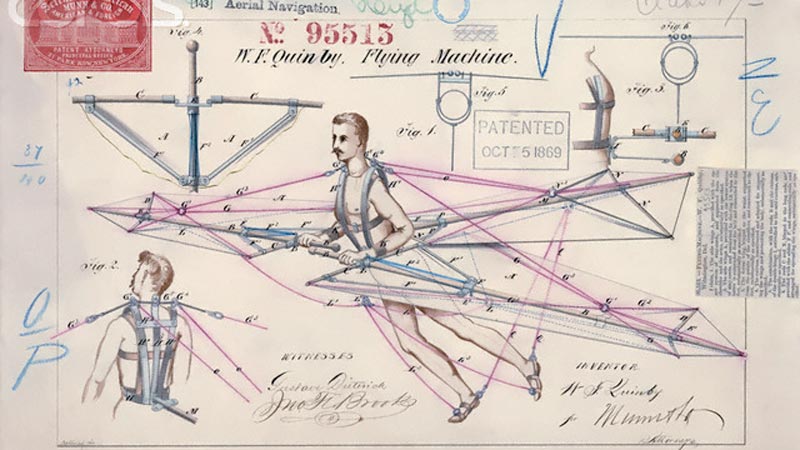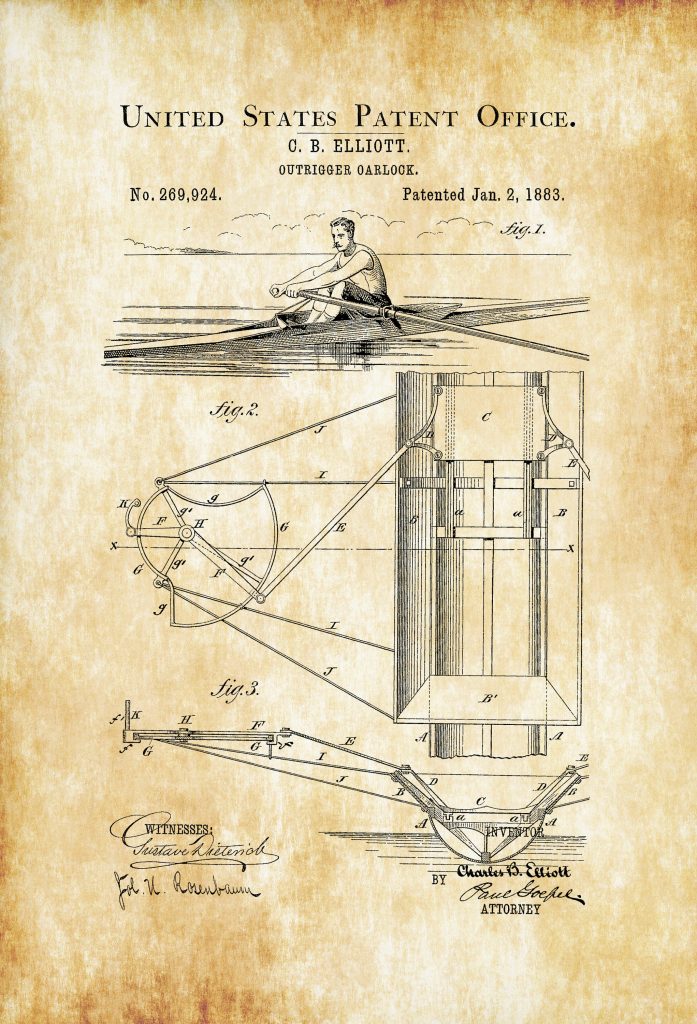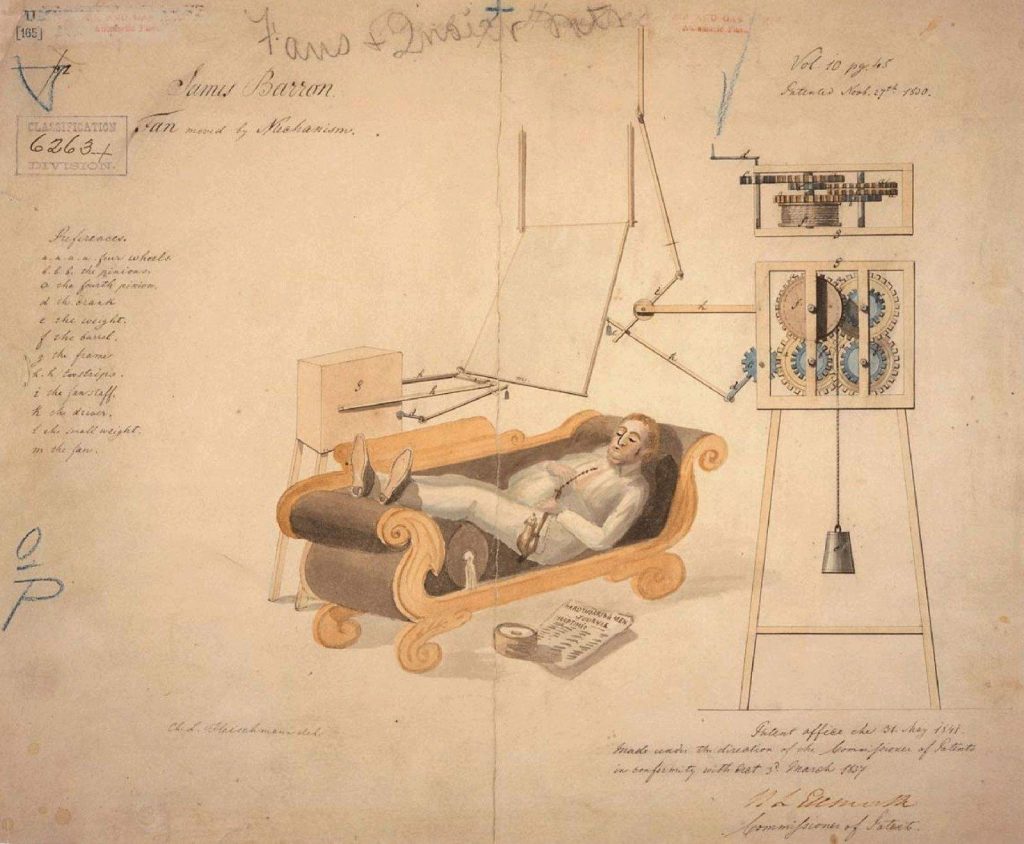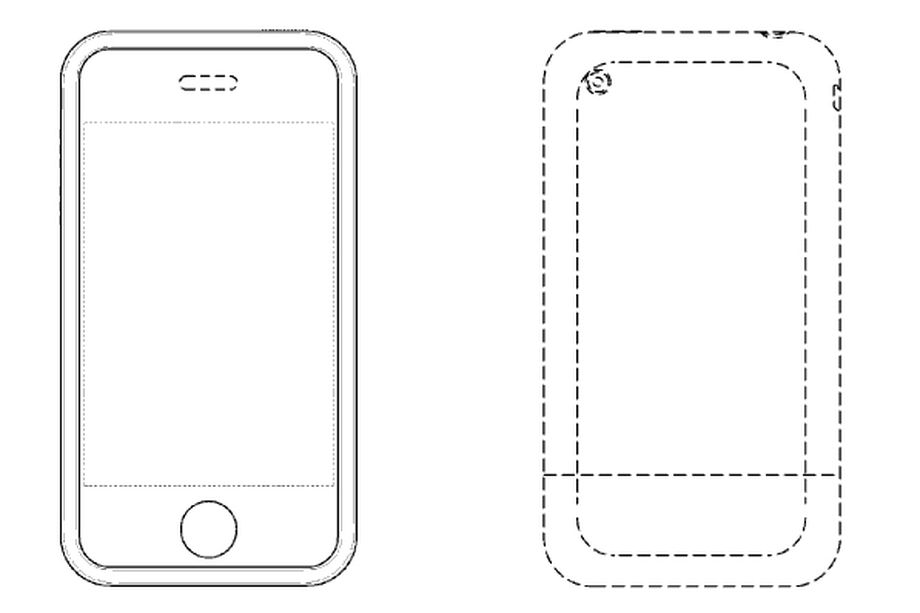Nowadays, no one but an inventor would hang a patent drawing on a wall. But once upon a time, patent drawings often went way beyond the merely functional – some of them were museum-quality works of art.
Take a look at this drawing from a patent for a fire ladder in 1837. It includes many extraneous details you’d never see in a patent drawing today: a tree in the background, flames and smoke coming out of a window, someone shouting out either an alarm or instructions.



Or how about this patent for an oarlock from 1883? Not only are there clouds, the rower has a moustache, and is that sweat on his brow?
Or this patented way to keep your cool from 1800? The artist added not only a pipe, but a newspaper to convey how relaxing it would be to lounge around with this invention providing a gentle breeze.
You don’t have to actually build your machine and prove it works to get a patent, as is obvious from this flying machine patent from 1869 – anyone trying to fly in this device would surely be killed, but the drawing for the patent is a work of art, again with details and coloring we don’t see anymore.
Get error-free patent drawings in 4-6 days. Free Unlimited Revisions. Price starts at $30.
A fire in 1836 destroyed many beautiful, early patent drawings. After the fire, the patent office started to require drawings submitted in duplicate, so in the event of a fire in one place there would still be a copy. It was too much effort to include extraneous details on multiple copies, so patent drawings started becoming simpler.
Over time, both law and custom have dictated simpler patent drawings.
In 2000, the US Patent Office changed some of the rules for patent drawings because it wanted to “focus on having a drawing that can communicate the invention to the examiner and on the scanability of the drawings so as to produce readable drawings in published applications and patents.” To make reproduction and scanning easier, patent drawings must be black and white, unless color is needed to explain the invention. The same considerations mean no more extraneous details. Besides the regulatory requirements, businesses today are universally cost-conscious. No business is going to spend money on artistic flourishes to a patent drawing.
As a result, today’s patent drawings are generally not as artistically beautiful as patent drawings from years gone by – see this drawing from Apple’s iPhone design patent as an example:
On the other hand, the iPhone has generated billions of dollars in revenue for Apple. We’re sure that Apple’s shareholders find that drawing quite beautiful.
The patent drawings we create for clients may not be something that museums will acquire to adorn their walls, but they will help our clients receive their patents, and there’s nothing more beautiful to an inventor than that patent certificate. Whether your drawings needs are for something as simple as the iPhone design, or something as complex as a flying machine, we are ready to be of service.
Learn more about how we work.




